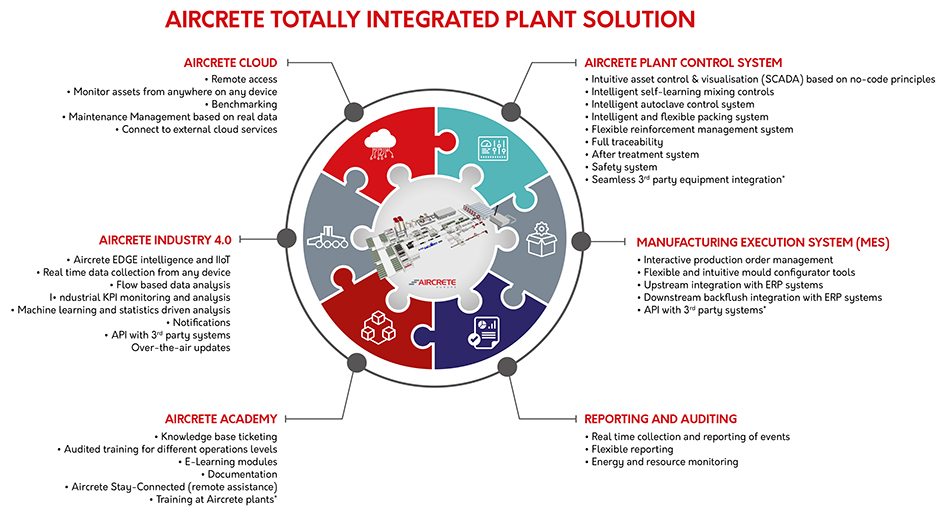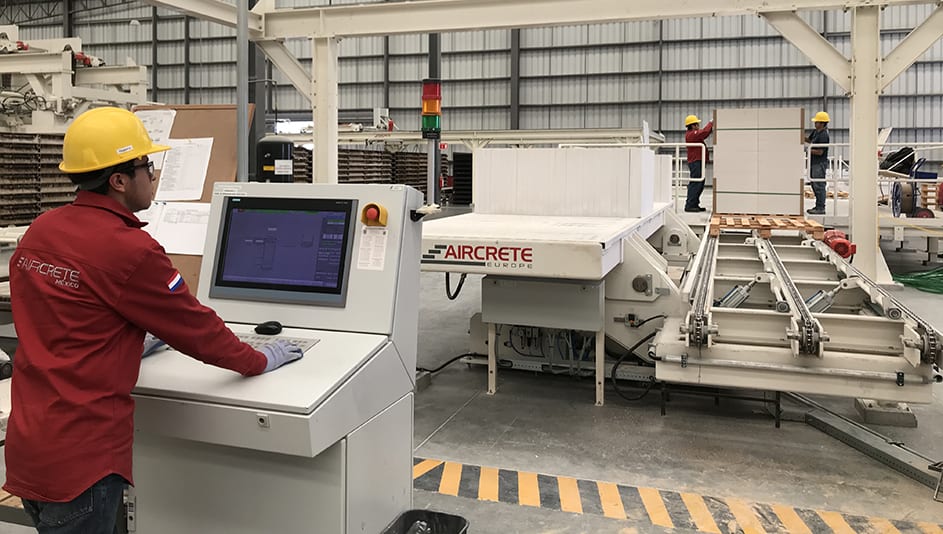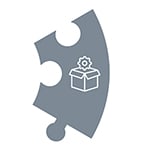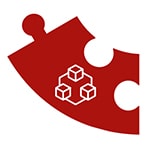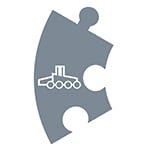Within the AAC industry, control systems are used in many forms and ways. Although most control systems used in the AAC industry are PLC driven, their architecture remains relatively simple and limited in capability. This is quite coherent because many production facilities already exist for several decades. During their time of design, the control system components were rather expensive and had limited calculation power. Throughout the years, these plants have often modernized sections or added new technology here and there, but not many have renewed or replaced their complete control systems in operation.
Even in newly designed plants, control systems are very often still simple in their architecture. Although the calculation power and components have become more affordable in recent years, the relative share of a control system within a total plant design and cost has increased significantly by adding more technology, capability and software to the equipment scope and increase in safety requirements. For a long time, this share was estimated at around 10% of the cost of a plant but has steadily increased to up to 30%.
Traditional control systems: The equipment supplier approach
Traditional control systems in the AAC industry were often purely PLC driven, based on a simple principle (Fig. 1). Inputs were often just digital signals coming from push buttons or simple switches. The PLC would then analyze inputs, execute its program and set outputs. Process visualization or data collection were often not present. In case processes or machine states were visualized, it was generally done with blinking lights. Data collection, if done at all, was mostly done manually by means of a structured paper trail throughout the production process where every operating station would write the relevant data down somewhere, for example on a floor traveler.
With industrial control systems evolving over the years and hardware becoming more powerful and affordable, more possibilities emerged. From that moment, around early 2000’s, programmable HMI screens and SCADA systems started to be used within the AAC industry (Fig. 2), allowing for flexible control, more visualization and better data collection. Often, SCADA was mainly used for visualization purposes, but its data collection capabilities were not utilized as much.
Fig. 1: Traditional PLC control architecture Fig. 2: Enhanced traditional control architecture
Although newer plants were generally delivered with newer control systems technology, a large discrepancy was often observed between what plants were really looking for and what suppliers were delivering. This was a result of AAC machine builders mainly focusing on a functional control system for their own equipment scope and trying to reduce the costs. Many were not taking into account the bigger picture of actually running a plant and commercializing the end product.
As a consequence, plants had to purchase and develop these systems and procedures by themselves over time. This approach often resulted in a mix of various systems from different vendors throughout the whole operations activity that can be best described as a “patchwork quilt”. It is not hard to imagine that such a combination of systems is quite difficult and expensive to maintain.
Totally integrated control systems: The technology partner approach
As a leading AAC solution provider, Aircrete Europe continuously monitors the latest developments in control systems technology to apply within the AAC industry. One of the most important conclusions that can be drawn is, especially the world of control systems being very dynamic and ever-changing to keep up with the latest trends and production needs. Hardware and software products are updated regularly by their manufacturers; products that are new today may become obsolete the next year.
Generally speaking, it is impossible for plants to keep up with this rapid development at all levels. Upgrading or changing the existing hardware and software for the complete plant continuously is a very costly and risky activity, requiring skills that lay outside a plant’s core business.
The strategic decisions of Aircrete to make selective investments in a number of AAC factories evolved into becoming a true integrated technology partner. Owning factories and understanding the challenges and pitfalls of the production process accurately, Aircrete Europe questioned whether it would be possible to come up with an overall umbrella control systems solution that could make any plant benefit from the latest developments and stay ahead with minimal maintenance cost and risk towards the future.
This has resulted in an integrated plant control solution, called “Aircrete In Control 4.0”, where the complete plant control system is approached as a whole and built up in a modular way. Of course, the term ‘modular’ is not new and there are many solutions out there that would offer a mixing or an autoclaving control module. However, ‘modular’ from Aircrete’s perspective takes controls far beyond that level and can be visualized as a perfectly integrated jigsaw puzzle (Fig. 3).
Fig. 3: The individual layers of the Aircrete In Control 4.0 Solution fit seamlessly like pieces of a jigsaw puzzle
The following sections describe the Aircrete In Control 4.0 Solution in more detail, some of which are always a standard in any new Aircrete factory. Few others can be modularly added to customers with a new or existing factory who want to bring their plant control system to another league.
Aircrete Plant Control System
This first and base layer of the Aircrete In Control 4.0 Solution consists of several plant area control modules that are standard in any new Aircrete factory (Fig. 4). Aircrete Europe hereby strives to be a leading AAC plant control system not only by just interfacing them but also completely integrating all 3rd party equipment under one umbrella.
Key features of Aircrete Plant Control System
- Intuitive asset control, visualization and data acquisition based on no-code principles
- Intelligent adaptive mixing control system
- Intelligent autoclave control system
- Intelligent and flexible packing system
- Flexible reinforcement management system
- After treatment systems
- Full traceability throughout the production process
- Safety and alarm systems
- Seamless 3rd party equipment integration
Fig. 4: The control and monitoring modules distributed in various production areas are seamlessly integrated and managed by the overarching in-house developed Aircrete Plant Control System
Manufacturing Execution System (MES)
On top of the integrated plant control layer, it is possible to integrate an MES layer, which again is a standard in any new Aircrete factory. This layer takes care of handling all production orders, job and batch management, whether they are manually created or automatically inserted by an Enterprise Resource Planning (ERP) system through the Aircrete Application Programming Interface (API).
In addition to the traditional downstream data flow from ERP, the system is also capable of feeding back real-time production data back upstream into ERP and Customer Relationship Management (CRM) systems. This is an important feature as, besides the need for pushing production straight from ERP to the plant, it is crucial to know what has actually been produced, in what quality and quantity and what is available where on the stockyard or how much raw materials are still available in the silos.
In order to translate the production order data into the plant and its equipment, Aircrete Europe has developed its own mould configurator tools that check whether products (especially when making specialized panels) can be produced, or the required resources are available. This is all done before release for production and decreases the risk of downtime significantly.
Key features of Manufacturing Execution System (MES)
- Interactive production order management
- Flexible and intuitive mould configurator tools
- Down and upstream integrations with ERP systems
- API with 3rd party systems
Reporting and auditing
As AAC plants can be quite complex, it is important to be able to record a lot of data. This is done in the reporting and auditing layer, which is a standard feature in most of the new Aircrete factories. With this data, production and quality can be controlled and an audit trail can be created. This helps AAC plants to comply with ISO standards and make them fully in control of their business.
Furthermore, data recording is an important tool for fault detection and downtime minimization. Although reporting can be set up flexibly to the requirements of any AAC plant, generally the following data is collected and represented in reports:
- Production data: This includes all relevant data related to the production of AAC, such as temperatures, pressures, hardness, batch numbers etc.
- Machine data: This includes all relevant data related to the operation of equipment, such as cycle times, errors, maintenance and industrial KPI’s, operator events etc.
- Utility data: This includes all relevant data related to plant utilities and resources, such as raw materials, utility resource and energy consumption.
Key features of Reporting and auditing
- Real-time collection and reporting of data and events
- Flexible reporting
- Utility, energy and resource monitoring and reporting
Aircrete Academy
Aircrete Europe understands that a successful AAC plant is not made by just delivering equipment. Especially when a new plant is erected, much training and know-how is needed to ensure a smooth transition towards becoming an AAC producer. The Aircrete Academy is unique and is created especially for this purpose. It is an extensive and interactive platform for AAC plants to get up to speed quickly and receive the support they need.
Key features of Aircrete Academy
- Knowledge base and ticketing system
- Audited training for different operations levels
- E-learning modules
- Plant documentation such as drawings, manuals and operations handbooks.
- Aircrete Stay-Connected Remote Assistance
- Training at Aircrete plants
Aircrete Industry 4.0
Replacing a complete plant control system will often result in large costs with high risk and long downtimes. Although this might sometimes be required for support and availability reasons (phased-out software products might not be supported or available anymore at some point in time), it is often not a preferred option for production facilities.
For this reason, Aircrete Europe believes it is important to be capable of seamlessly integrating the legacy control systems into an overall control system.
The Aircrete Industry 4.0 layer takes control systems to the next level. As mentioned in the third chapter of this article, Aircrete Europe has been looking for a way to bring any plant to the next level benefiting from the latest technologies.
Aircrete Industry 4.0 provides this option to all AAC plants. Regardless of whether plants are running on an Aircrete or 3rd party control system or using the latest PLC’s or legacy products of almost any brand; it is possible to integrate them within the Aircrete Industry 4.0 platform without major or expensive modifications.
When a plant is connected to this platform, data from any tag or device within that plant can be collected, analyzed, interpreted and visualized as to the needs of the user. Based on the analysis and statistic features, data can be fed back into the process to enable automatic real-time decisions or triggers in the process. All of this can be done on a no-code basis, so no expensive external consultants or non-core business skills are needed. The project can be realized either area by area or in a full upgrade all at once.
This platform can generate endless capabilities for AAC plants, for example, in the area of maintenance. With the data, calculation and interpretation power at the right spot, predictive maintenance could be applied, minimizing downtimes and maintenance costs.
Key features of Aircrete Industry 4.0
- Aircrete EDGE intelligence and IIoT
- Real-time data collection from any device
- Flow based data analysis
- Industrial KPI monitoring and analysis
- Machine learning and statistics driven analysis
- Notifications
- API with 3rd party systems
- Over-the-air updates
- Latest industry security standards
Aircrete Cloud
The Aircrete Cloud is an online platform where all relevant plant data; collected and normalized at the EDGE, can be visualized, analyzed, stored and interpreted. The platform is accessible from any device and easily customizable through a graphical user interface. Aircrete Europe is continuously developing this platform, adding new features and capabilities regularly so that all users can use the latest up-to-date functionality.
It goes without saying that the latest industry security standards are being used to ensure proper protection and safety. Additionally, data is always available and always backed up.
Key features of Aircrete Cloud
- Remote access
- Monitor assets from anywhere on any device
- Benchmarking
- Notifications
- Maintenance management based on real data
- Connect to external cloud services such as Google, AWS and Azure
One Plant, One System: Aircrete In Control 4.0 Solution
With the Aircrete In Control 4.0 Solution, Aircrete Europe provides a robust and modular control system that is ready for the future. By adding industry 4.0 features and cloud services, a platform with almost endless possibilities for plants is created.
Data becomes available at any given moment, at any time and is stored in the right places. No important process data will be lost anymore. Therefore, plants will be able to see and compare the real-time performance of their assets.
Cost and maintenance-reducing processes, such as preventive and predictive maintenance can be easily realized and equipment effectiveness becomes visible instantly so it can be worked on effectively.
Whether you are looking for a greenfield opportunity or to upgrade (parts of) your existing, legacy control system in your current plant contact us now!




